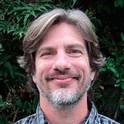Understanding the natural patterns of regeneration following human disturbance is essential for effective restoration and management of second-growth forests. Despite their unique ecological character, little is known about these patterns in Sequoia sempervirens (D. Don) Endl. (Coast Redwood) forests. We examined the composition and structure of naturally regenerating stands with 360 randomly located sample plots across a chronosequence of five replicated age-classes (18 to 127 yr) and three old-growth reference sites. Results indicate a progression of stand characteristics towards old-growth conditions, with several measures reaching old-growth equivalence within the timeframe of the chronosequence. Stand density, canopy cover, and species richness reached old-growth equivalence within 41–80 yr; Shannon-diversity reached old-growth equivalence between 80–100 yr; and the density of redwood seedlings and shrub cover reached old-growth equivalence between 100–130 yr. Basal area, herb cover, and the relative dominance of S. sempervirens progressed toward, but did not reach, old-growth equivalence. Size-class analysis indicated an increase in the density of large diameter trees, with no change in the density of smaller size-classes after forty yr. Coast redwood associated understory species were favored on the older sites with the cover of Calypso bulbosa (L.) Oakes, Trillium ovatum Pursh, and Viola sempervirens Greene reaching old-growth equivalence, while Iris douglasiana Herb., Tiarella trifoliate L., and Achlys triphylla (Sm.) DC. did not. No non-native species were recorded in stands older than 60 yr. We conclude that coast redwood forests are resilient to human disturbance, though some old-growth characteristics may require more than a century to develop.
- chronosequence,
- regenerating,
- sequoia
Available at: http://works.bepress.com/will_russell/1/
